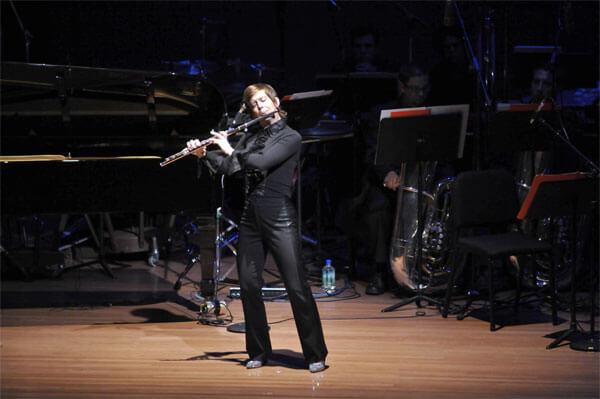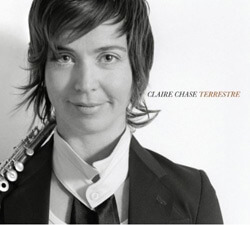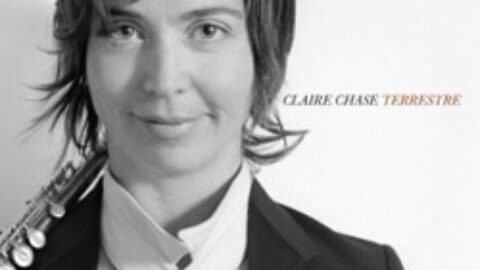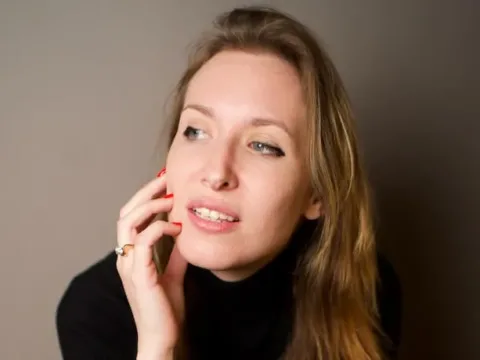 On her new album Terrestre, Claire Chase achieves every woodwind player’s fantasy: playing with a perfect response, solid tone, and in total command of her instrument. Her selection of some of the most difficult music composed for flute in the recent past and present demonstrates her technical prowess and determination to present her instrument’s capacity for intensity.
On her new album Terrestre, Claire Chase achieves every woodwind player’s fantasy: playing with a perfect response, solid tone, and in total command of her instrument. Her selection of some of the most difficult music composed for flute in the recent past and present demonstrates her technical prowess and determination to present her instrument’s capacity for intensity.

The highlight on the album for me was the title track, Terrestre, composed by Kaija Saariaho in 2003. Chase is joined by her fellow members of the International Contemporary Ensemble on violin, cello, harp, and percussion. Their sense of musical camaraderie is palpable in the playful interactivity of the ensemble, and at times a sense of groove sets into the music. Saariaho proves herself with this work as a composer with a coherent voice, developing her material out of simple motives all with an intuitive sense of rhythmic propulsion. The contrast and blend between flute and xylophone are particularly intriguing, and the sound explorations in the strings, alternation of flute with Berio-style human voice, and light but present in the foreground percussion chart new ground.
Dai Fukikura’s Glacier, composed in 2010 for Chase, is a rare presentation of solo bass flute. Chase conveys a deep, full, and resonant tone throughout, including a wonderful straight tone at a quiet dynamic. The piece explores a wide range of sonorities on the bass flute, easing into new territory and letting the music stretch out. The split overtones are the most impressive for their deep resonance.
 The remaining three pieces fall more into the category of atonal twentieth century music. Pierre Boulez’s Sonatine is a powerhouse in the repertoire, and Chase certainly has the technical command to give it an authoritative recording. The highlights for me are when the nervous energy between the flute and piano move with a sense of direction into a never appearing conclusion. Franco Donatoni’s Fili is most captivating in the brief moment of dissonant lyricism in the middle, a simple repeated background in the piano that almost grooves under bursts of energy in the flute, and a leaping passage in the flute at the end with lower register returned to that could almost be a funky groove. Other than these moments, the repeated atonal gestures aren’t quite captivating enough and the piece has a bit of a feel of disparate episodes. Elliot Carter’s flute and clarinet duet Esprit Rude/Esprit Doux is at its best when the timbres of the two instruments come nearly together in close dissonances, and the interaction between the two rather different sounding woodwinds offers interesting contrasts.
The remaining three pieces fall more into the category of atonal twentieth century music. Pierre Boulez’s Sonatine is a powerhouse in the repertoire, and Chase certainly has the technical command to give it an authoritative recording. The highlights for me are when the nervous energy between the flute and piano move with a sense of direction into a never appearing conclusion. Franco Donatoni’s Fili is most captivating in the brief moment of dissonant lyricism in the middle, a simple repeated background in the piano that almost grooves under bursts of energy in the flute, and a leaping passage in the flute at the end with lower register returned to that could almost be a funky groove. Other than these moments, the repeated atonal gestures aren’t quite captivating enough and the piece has a bit of a feel of disparate episodes. Elliot Carter’s flute and clarinet duet Esprit Rude/Esprit Doux is at its best when the timbres of the two instruments come nearly together in close dissonances, and the interaction between the two rather different sounding woodwinds offers interesting contrasts.
While these three works certainly merit a solid recording like Chase’s, they nevertheless remind me of something I read in Charles Seeger’s composition treatise (co-written with his wife, composer Ruth Crawford), Tradition and Experiment in (the New) Music: that the “composer must remember…that there is often no difference between a simple rhythmic figure performed with rubato and a complex one played accurately.” That is to say that that the aforementioned three pieces can feel a bit stiff at times, with too much attention to rhythmic accuracy and meeting their technical demands rather than letting the music breathe. The sixteenth note runs are impressive, but are too even for my tastes, and the complex lines at times sounds a bit flat rather than becoming musical gestures with clear definition. This could very well be what the composers intended, and in some instances it would be difficult to play them otherwise. I realize the value of a clean recording of important pieces in the twentieth century flute repertoire, but I could use a bit of that Miles Davis approach of being willing to go past the brink, risk making some mistakes, but giving greater shape and soul to the music. Moreover, it would have been nice if at least one piece was included that brought out more expression and lyricism to balance the album out – something like Robert Muczynski’s excellent flute sonata. Too often these types of compositions are left out of recordings of new music, likely because it’s not considered experimental enough. On this album, it is Fukikura’s patient exploration of bass flute sonorities and Saaraiho’s unique compositional voice that bring the most excitement and sense of the new to this album.
Claire Chase, Terrestre (New Focus Recordings, 2012) – Buy on Amazon
—
David Pearson is a saxophonist residing in NYC.
























